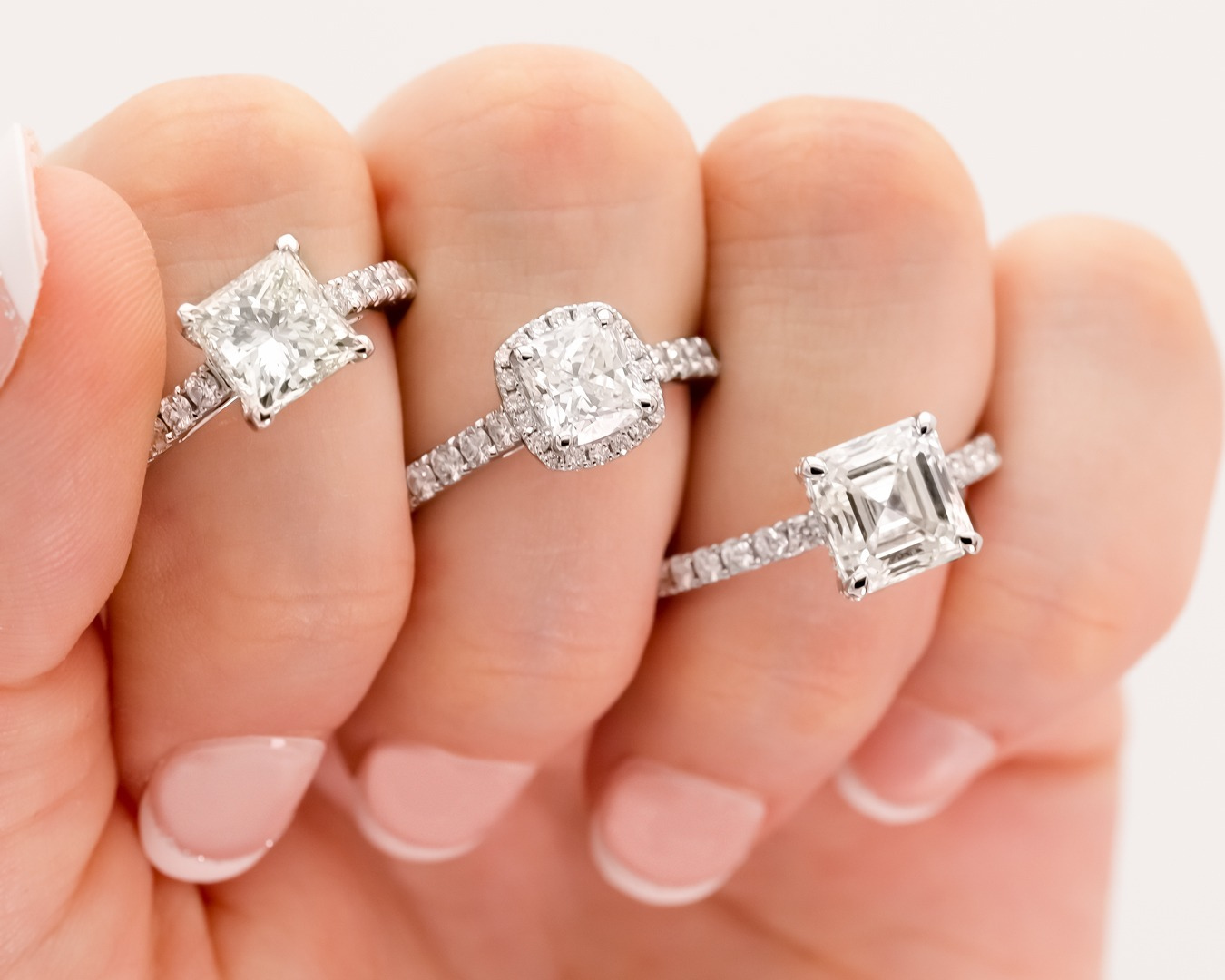A halo engagement ring is a diamond ring design in which the focal stone is surrounded by smaller diamonds or gemstones on all sides. The halo is a versatile style component of an engagement ring setting that may be added to any cut, colour, or quality centre stone and coupled with any style band. A halo is typically made up of tiny pave diamonds that are round-cut or cushion-cut and the same hue as the centre stone. This results in a stunning diamond ring that sparkles brilliantly. To create a unique or vintage halo engagement ring design, a halo diamond ring can also include accent stones or colourful gemstones.
The essential beauty of a halo is how nicely it complements an engagement ring's central stone. The round cut or cushion cut diamonds used to create a halo may give a lot of fire and shine to any ring. When light strikes these stones, it reflects off of them brilliantly. A halo can be an excellent technique to produce the right level of shine for diamond cuts with a more delicate luminosity, such as emerald and Asscher.

Is a halo pricey if it is so popular and increases the overall size and glitter of a ring? Both yes and no. As previously said, a halo can be a low-cost way to improve the aesthetic of an engagement ring. If the centre stone lacks the clarity, size, or quality of cut required to shine, a halo can frequently be far less expensive than a diamond of greater clarity, size, and quality.
A halo setting, on the other hand, is more expensive than simpler settings with the same size and grade centre stone. Lab-grown diamonds or diamond simulants are an excellent method to offset the expense of a halo engagement ring.
The contemporary halo rose to prominence in the 1920s. The art deco movement gave rise to the style's clean, geometric lines, decorative detailing, and dramatic flourishes. Halo engagement rings have been in and out of favour throughout the last century. Throughout the decade, the look became increasingly popular. From Natalie Portman to the Duchess of Cambridge, a plethora of celebrities have chosen halo, or cluster design, engagement rings.
From east-west settings, with their sleek, sideways facing orientation, to the twin lines of a split shank engagement ring, to the effortless natural symmetry of a bypass setting, new setting types are breathing new life into old halo styles. A classic halo style with a simple straight setting cannot compete with modern settings for airiness, freshness, and harmony.
Whether you like these new halo varieties, prefer solitaire settings, or are a die-hard devotee of strong halo styles. Buchroeders has your back.
Our engagement ring variety is unrivalled. Looking for something a little different? Our skilled staff is here to assist you in creating the unique engagement ring of your dreams.
A straight wedding band will not sit comfortably next to this engagement ring. Some ladies prefer the look of a straight wedding band and the space it creates between the halo and the ring. If you want to, go for it! There are no more rules. However, there is a drawback: the two rings will wear each other out. You can either rebuild those worn parts in the future or have the rings welded together. When rubbing white gold and platinum rings together, platinum rings will endure much longer than white gold rings. See the distinction between platinum and white gold to learn more.
The brilliant shine of the halo ring setting hypnotises passersby at first glimpse. However, you'll quickly see that halo ring settings aren't all that dissimilar to solitaire settings. The main stone is surrounded by a halo of encrusted gemstones, which makes it unique. The halo effect is created by the smaller accent stones, which produce a fluid shimmer that highlights the size and glitter of the main stone.






0 comments:
Post a Comment